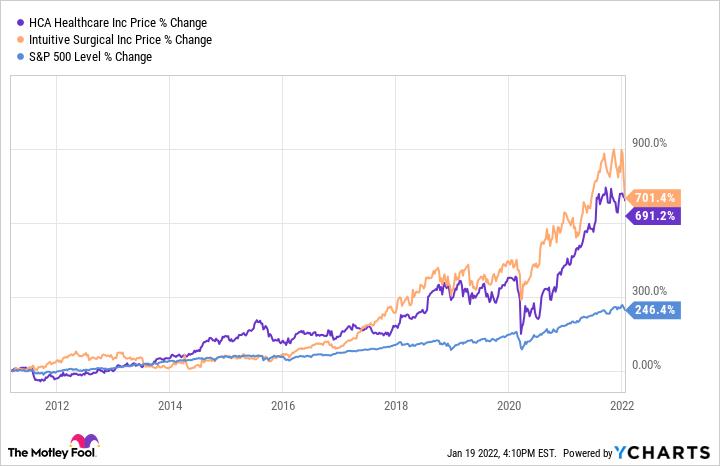Artificial intelligence (AI) promises to be one of the most transformative modern technologies we've ever seen, capable of quickly completing complex tasks that once required thousands of hours of human input. Machine learning is a subset of AI that uses data to improve processes, and also make predictions. It's already being applied to dozens of industries globally, streamlining everything from racing to internet search results.
According to one industry report, the machine learning market was worth $1.6 billion in 2017 and is set to explode to $20.8 billion by 2023. That's a compound annual growth rate of 53%, and the following two companies are leading the charge.
Image source: Getty Images.
1. The case for Splunk
Branded the "Data-To-Everything" platform, Splunk (NASDAQ:SPLK) helps companies solve a critical modern-day problem. In the digital economy, these companies are generating an enormous amount of data and they often lack the expertise to manage it, let alone unlock its incredible value.
Splunk's specialty is ingesting mountains of data, using machine learning to quickly analyze it, and then displaying its insights on a visually appealing dashboard. It allows the end-user to make valuable real-time decisions, and identify opportunities that were previously hidden in the noise of everyday activity.
Splunk's partnership with Formula 1 racing team McLaren offers a perfect example of its utility, as they rely on the insights Splunk provides to make live changes to their cars during races. And Salesforce's collaborative work platform, Slack, leverages Splunk's cloud services platform to gain visibility across its entire 12-million-user ecosystem. While these are just two examples, 92 of the Fortune 100 companies turn to Splunk for similar reasons.
Metric | Fiscal 2018 | Fiscal 2022 (Estimate) | CAGR |
|---|---|---|---|
Revenue | $1.27 billion | $2.55 billion | 19% |
Data source: Splunk, Yahoo! Finance. CAGR = Compound Annual Growth Rate. Splunk's fiscal year ends on Jan. 31.
Like many technology companies, Splunk is now delivering its services in the cloud and using the cloud to expand its business. It allows Splunk's customers to access their data and applications online, doing away with the need to install programs on local devices, which greatly improves accessibility.
Its cloud segment now represents 36% of total revenue as of the recent fiscal third quarter of 2022, and it's also growing far more quickly than the overall business, at 68% year over year for the period. It could be the main driver of Splunk's business going forward, allowing it to deploy its machine learning-based technology more broadly. For investors, this presents an enticing long-term opportunity.
Image source: Getty Images.
2. The case for Alphabet
Alphabet (NASDAQ:GOOG)(NASDAQ:GOOGL) is one of the largest technology companies in the world, with a $1.7 trillion market valuation as of this writing. It's best known for its Google search engine, which processes an estimated 5.6 billion queries per day. With a workload of that size, implementing AI and machine learning isn't just helpful, it's necessary.
Google's search engine attempts to deliver the best results not just by answering questions, but by understanding what the searcher means. In fact, its spell-check feature predicts what a searcher might've been looking for when they've typed a word incorrectly, or input an incomplete phrase, based on 680 million parameters. And more impressively, it does it in just three milliseconds.
But Google also offers AI and machine learning tools to its customers. These tools cater to all experience levels, whether the user has built such technologies before or not. Google's cloud-based suite of services offers both pre-trained and custom machine learning models, which can reduce the amount of code required by 80%. Using Google Cloud, customers can develop models for image classification and video discovery, language and text recognition, and data analysis.

Metric | 2018 | 2022 (Estimate) | CAGR |
|---|---|---|---|
Revenue | $136 billion | $297 billion | 21% |
Data source: Alphabet, Yahoo! Finance. CAGR = Compound annual growth rate.
As with Splunk, growth in Google Cloud is far outpacing the growth of Alphabet's overall business. In the recent third quarter of 2021, the cloud segment grew at 47% on a trailing-12-month basis compared to the prior period. But it's still a relatively small piece of the company, representing just 7% of total revenue.
For long-term investors, Alphabet stock is a great way to expose your portfolio to the artificial intelligence and machine learning revolution. The company has the financial resources and talent pool to lead the way, and it comes with a suite of other businesses attached as an added bonus.









